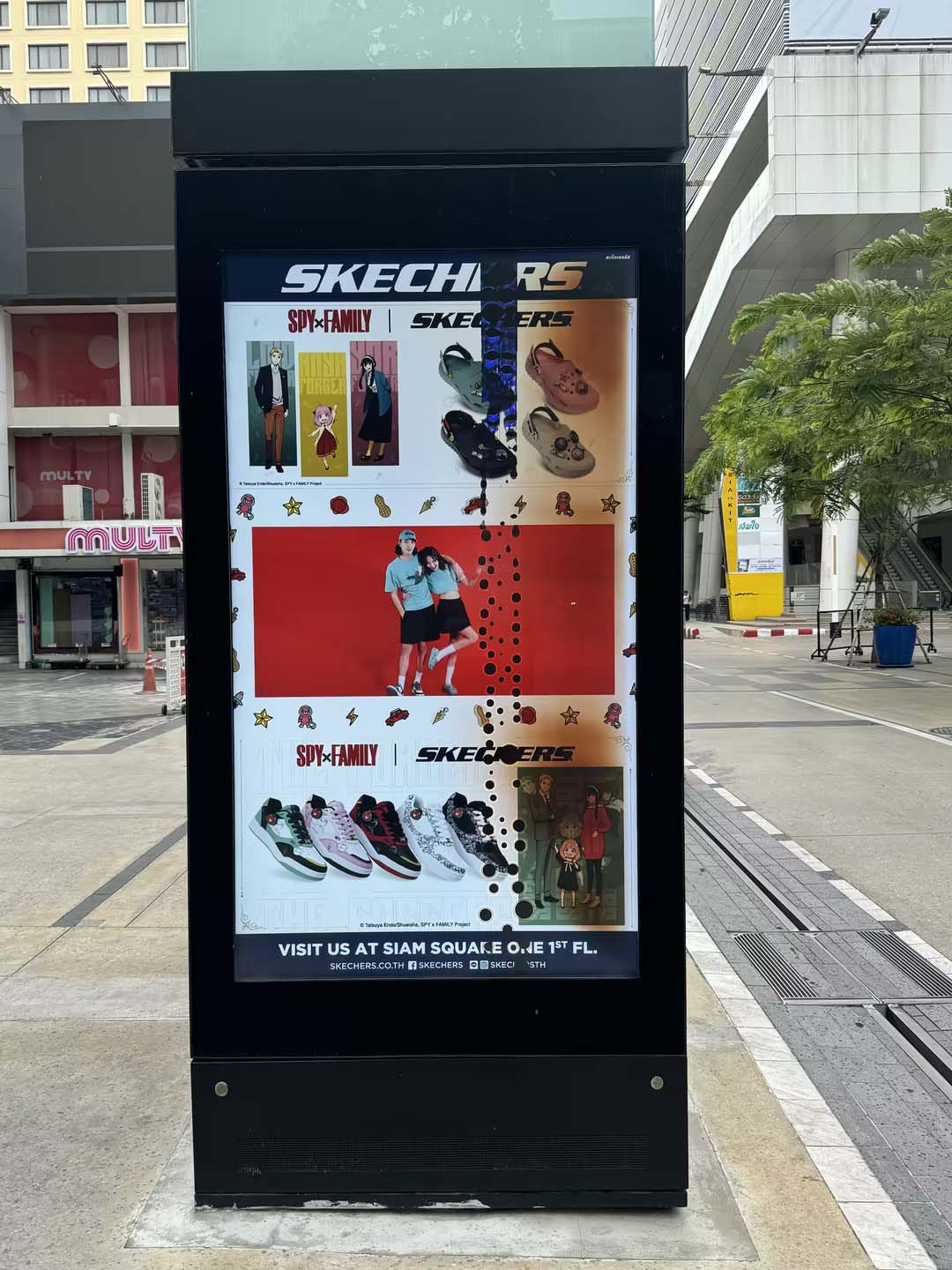In the realm of outdoor digital signage technology, LCD screens are widely used due to their high brightness, low power consumption, and vibrant colors. However, as these technologies become more prevalent, the impact of outdoor environments on LCD screens has become increasingly significant. The issue of screen blackouts, particularly during prolonged exposure to direct sunlight in summer, has emerged as a pressing challenge. This blog will explore the causes of this phenomenon and provide expert recommendations for prevention.

The Impact of Sunlight on LCD Screens
Sunlight consists of visible light, infrared rays, and ultraviolet (UV) rays, with UV rays having the highest energy. Prolonged exposure to strong UV radiation can severely affect LCD screens. The high-energy UV photons can cause the following damage to liquid crystal molecules:
-
Chemical Bond Breakage in Liquid Crystal Molecules: The high energy of UV photons can break the chemical bonds in the long chains of liquid crystal molecules, causing molecular fragmentation. This disruption in molecular alignment impairs the screen's ability to respond to electrical signals, affecting display performance.
-
Decrease in Electrical Resistance and Increase in Power Consumption: Short-term exposure to strong UV rays can lead to a decrease in the electrical resistance of the LCD components and an increase in power consumption. This change means that liquid crystal molecules require more energy to maintain normal display operation, exacerbating their operational strain.
-
Reduction in Threshold Voltage: Prolonged UV exposure can lower the threshold voltage of liquid crystal molecules. A reduced threshold voltage means that the molecules become less sensitive to driving voltages, making it difficult to maintain stable molecular alignment and impacting the display quality.
-
Screen Yellowing, Brightness Reduction, and Black Spot Formation: When UV damage causes liquid crystal molecules to cease functioning, the screen can exhibit yellowing, reduced brightness, and, in severe cases, permanent black spots. These black spots not only impair the display of advertisements but also degrade the overall visual quality of the screen.
-
Temporary Recovery and Permanent Damage: Liquid crystal molecules might temporarily recover their functionality when temperatures drop. However, repeated cycles of high temperatures and UV exposure can lead to permanent damage, rendering the LCD screen inoperable and resulting in permanent black spots.
How to Prevent LCD Screen Blackouts
To address the issues mentioned above, industry experts and engineers have proposed several solutions to mitigate or prevent the impact of sun exposure on LCD screens:
-
Use of UV-Blocking Coatings or Filters: Applying UV-blocking coatings or filters to the surface of the LCD screen can effectively block a portion of UV rays from reaching the liquid crystal layer. This reduces direct UV damage to the liquid crystal molecules and extends the screen's lifespan.
-
Application of AR Glass: Utilizing Anti-Reflective (AR) glass can effectively block UV rays and reduce light reflection. AR glass achieves UV protection through specific UV-absorbing materials or coatings, significantly reducing UV damage to the LCD screen. Additionally, AR glass enhances display performance by minimizing reflections and glare, improving screen visibility.
-
Optimized Heat Dissipation System: Designing an efficient heat dissipation system is crucial for preventing LCD screens from overheating. Employing advanced cooling solutions such as additional ventilation channels, high-performance fans, or liquid cooling systems can effectively lower the operating temperature of the LCD screen and prevent heat-related damage.
-
Selection of High-Temperature Resistant LCD Materials: Using LCD materials specifically designed for outdoor environments can improve the screen's resistance to high temperatures and UV exposure. These materials are specially treated to maintain stable physical properties under high temperatures, reducing the risk of molecular chain breakage and alignment failure.
-
Regular Maintenance and Cleaning: Regular cleaning and maintenance of the digital signage’s cooling system and screen surface are essential for ensuring proper operation. During maintenance, check for scratches or damage to coatings and promptly repair or replace damaged components to prevent direct UV exposure to the liquid crystal layer.
Conclusion
The widespread use of LCD technology in outdoor digital signage makes addressing screen blackout issues crucial. By implementing UV-blocking technologies, optimizing cooling systems, and selecting high-temperature-resistant materials, it is possible to extend the lifespan of LCD screens and enhance their reliability in harsh environments. As technology continues to advance, we can anticipate more sophisticated protective measures being applied to LCD screens, providing even greater durability and performance for outdoor digital signage.